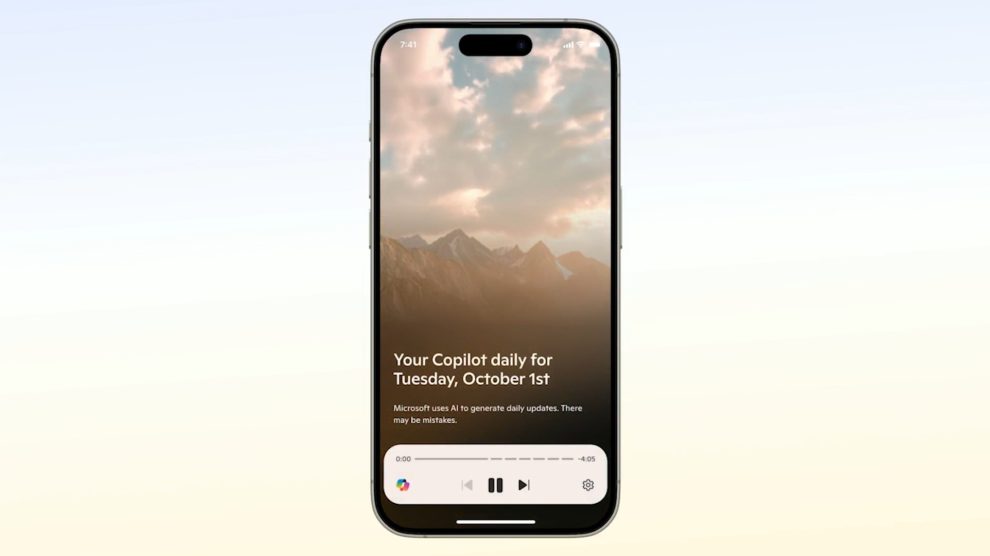Microsoft has unveiled a series of transformative upgrades to its Copilot AI assistant. As I stand in the bustling halls of Microsoft’s headquarters, there’s an undeniable buzz in the air. Engineers and executives alike are abuzz with excitement about the latest enhancements that promise to make Copilot more intuitive, versatile, and, surprisingly, more encouraging than ever before.
The tech giant’s latest announcement marks a significant leap forward in AI capabilities. Copilot, once a text-based tool, is now equipped with voice recognition, visual processing, and advanced problem-solving abilities. This evolution is not just a technical upgrade; it’s a reimagining of how we interact with our digital assistants.
Mustafa Suleyman, CEO of Microsoft AI, shared his enthusiasm: “We really are at this amazing kind of transition point. AI companions now see what we see, hear what we hear, and speak in the same language that we use to communicate with one another.”
As I observe the demo stations set up around the room, it’s clear that this isn’t just hyperbole. The new Copilot responds to voice commands with an almost human-like understanding, interpreting nuances and context in a way that feels surprisingly natural.
Voice Interaction: The Heart of the Upgrade

One of the most striking features of the new Copilot is its voice interaction capability. Available from today in English across Australia, Canada, New Zealand, the United Kingdom, and the United States, Copilot Voice brings a new dimension to digital assistance.
You can interrupt in mid-flow, and it can also actively listen,” Suleyman explains, demonstrating how Copilot handles a conversation with remarkable fluidity. “And that’s kind of the art of great conversation.”
As I test the feature myself, I’m impressed by how Copilot manages pauses and interruptions, much like a human interlocutor would. It’s a far cry from the rigid, command-based interactions we’ve grown accustomed to with digital assistants.
Visual Processing: A Window to Our World
Another groundbreaking feature, albeit still in its experimental phase, is Copilot Vision. This opt-in feature allows the AI to ‘see’ users’ screens and respond to cursor-indicated items. It’s currently limited to Copilot Pro subscribers, but the potential applications are vast.
“One of the things that seems to be most common is that people ask it for aesthetic advice,” Suleyman notes. “They’re on a fashion website, and they’re like, what do you call that pattern? What do you call that dress?”
The implications of this feature extend beyond fashion advice. Imagine an AI that can provide instant analysis of complex visual data or offer real-time feedback on design work. The possibilities seem endless.
The ‘Hype Man’ Persona: AI Gets Emotional
Perhaps the most intriguing aspect of the new Copilot is its shift in personality. Microsoft has tweaked the AI to offer more emotional support to users, positioning it as a digital cheerleader of sorts.
“It’s on your team, it’s backing you up, it’s your hype man,” Suleyman explains with a grin. This approach harkens back to Microsoft’s infamous Clippy assistant, but with a level of sophistication that its paperclip predecessor could only dream of.
As I engage with Copilot, I notice subtle changes in its responses. There’s an underlying tone of encouragement, a sense that this AI isn’t just solving problems, but actively rooting for my success.
With great power comes great responsibility, and Microsoft seems acutely aware of the privacy implications of these new features. Text interactions with Copilot are stored for 18 months, but users have the option to delete conversations. Copilot Vision, on the other hand, doesn’t keep a record of user queries, deleting data at the end of each session.
While the excitement around these new features is palpable, questions remain about their long-term impact and adoption. Shane Greenstein, a professor at Harvard Business School, offers a cautionary perspective: “It took five to 10 years of messing around with web interfaces to figure out how to get more than technically savvy people to buy something online. I expect that type of time scale for the iteration here, too.”
As I wrap up my visit to Microsoft’s headquarters, it’s clear that we’re standing at the cusp of a new era in AI interaction. The new Copilot, with its voice, vision, and encouraging persona, represents a significant step towards more intuitive and helpful digital assistance. While challenges remain, the potential for this technology to transform our daily work and interactions is undeniable.
Only time will tell how users will adapt to and embrace these new features. But one thing is certain: the future of AI assistance is here, and it’s more human than ever before.
















Add Comment